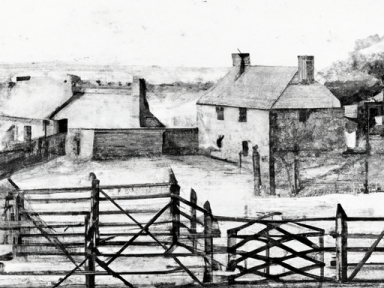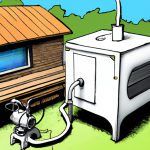
In a world where food security is becoming more uncertain and pests and diseases threaten our crops, it is crucial to take proactive measures to protect our gardens and homesteads. One proven strategy for pest prevention is the use of fencing. By creating a physical barrier, we can keep unwanted visitors out and secure our food sources.
The Importance of Fencing
Before diving into the various fencing options, let’s first emphasize why fencing is an essential element of any pest prevention plan:
- Pest Exclusion: Fencing acts as the first line of defense by preventing pests from entering your garden or homestead.
- Physical Barrier: A solid fence acts as a physical barrier, making it difficult for pests to access your plants and animals.
- Protection from Larger Animals: Fencing not only keeps out smaller pests like rodents, but it also deters larger animals such as deer and rabbits, which can cause significant damage.
- Preventing Disease Spread: Some pests carry diseases that can be transmitted to plants or animals. Fencing helps reduce the risk of disease transmission by keeping pests away.
Fencing Options
Now that we understand why fencing is important, let’s explore some effective fencing options for pest prevention:
1. Chicken Wire Fences
Chicken wire is an affordable and versatile option for creating a barrier against small pests. It is particularly useful for keeping out rabbits, squirrels, and birds. Ensure the fence is buried at least six inches into the ground to prevent burrowing animals from accessing your garden.
2. Electric Fences
Electric fences are highly effective in keeping out larger pests such as deer and raccoons. The mild electric shock they provide is enough to deter animals without causing harm. Remember to check your local regulations and install warning signs if electric fencing is used.
3. Woven Wire Fences
Woven wire fences, also known as livestock fences, are ideal for securing larger areas. They are durable and provide excellent protection against deer and other large animals. Ensure the height of the fence is sufficient to deter jumping.
4. Deer Fencing
If deer are a significant concern in your area, consider investing in deer fencing. These fences are taller and often include narrow mesh patterns that make it difficult for deer to get through. They are an effective solution for protecting your crops from deer damage.
5. Raised Bed Fencing
If you have raised garden beds, adding a fence around them can help deter pests. Use materials such as wood or metal to construct a small fence around each bed, preventing small animals from accessing your precious crops.
6. Burying Fencing
Some pests, like burrowing rodents, can easily dig under fences. To prevent this, bury the bottom edge of the fence at least six inches below the ground. This extra measure will help keep pests out and minimize the risk of tunneling.
Maintaining and Monitoring Fences
Once you have installed your chosen fencing, it is crucial to regularly inspect and maintain it. Check for any signs of damage or holes that pests could exploit. Additionally, monitor your fences regularly for signs of pest activity. If you notice any breaches or pest presence, take immediate action to address the issue.
Remember, while fencing is an effective way to prevent pests, it should be part of a comprehensive pest management plan. Regularly inspect your plants for signs of disease or infestation, practice good sanitation, and implement other pest control strategies to ensure the long-term success of your garden and homestead.
By taking the necessary steps to protect your garden and homestead, you are investing in your future food security. Don’t wait for pests to invade; act now and fortify your property with appropriate fencing.



GIPHY App Key not set. Please check settings